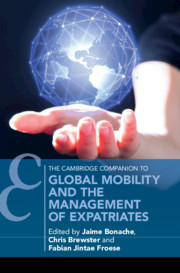Book contents
- Global Mobility and the Management of Expatriates
- Cambridge Companions to Management
- Global Mobility and the Management of Expatriates
- Copyright page
- Contents
- Figures
- Tables
- Contributors
- 1 Global Mobility
- Part I The Expatriation Process of Corporate Expatriates
- Part II Different Types of Expatriates and Stakeholders
- Index
- References
1 - Global Mobility
Reasons, Trends, and Strategies
Published online by Cambridge University Press: 12 November 2020
- Global Mobility and the Management of Expatriates
- Cambridge Companions to Management
- Global Mobility and the Management of Expatriates
- Copyright page
- Contents
- Figures
- Tables
- Contributors
- 1 Global Mobility
- Part I The Expatriation Process of Corporate Expatriates
- Part II Different Types of Expatriates and Stakeholders
- Index
- References
Summary
This chapter introduces background information and recent trends in expatriation. It begins by briefly reviewing the early literature on expatriation, from the 1960s to the late-1980s. It then describes changes that occurred in the 1990s that transformed radically the area of global mobility. Finally, the chapter outlines key trends in global mobility that define the landscape of the topic today. The chapter concludes by summarising the contents and key contributions that the reader will find in each chapter of this book.
Keywords
- Type
- Chapter
- Information
- Global Mobility and the Management of Expatriates , pp. 1 - 28Publisher: Cambridge University PressPrint publication year: 2020
References
- 1
- Cited by



